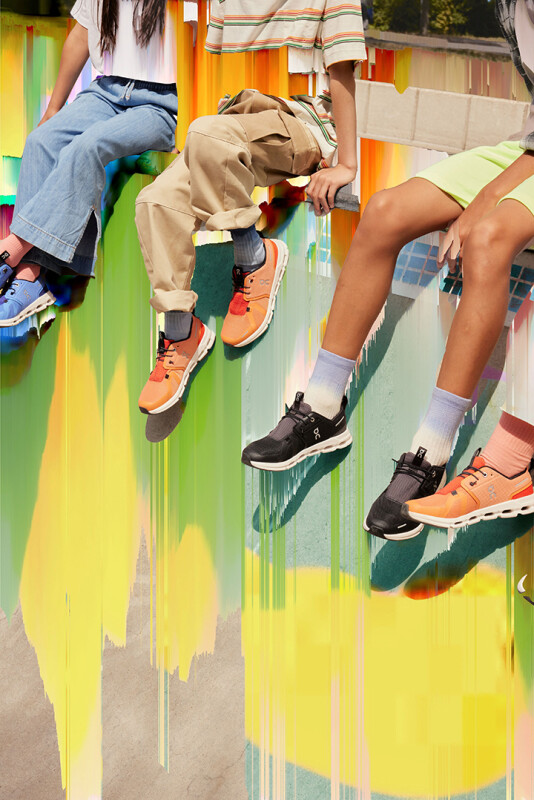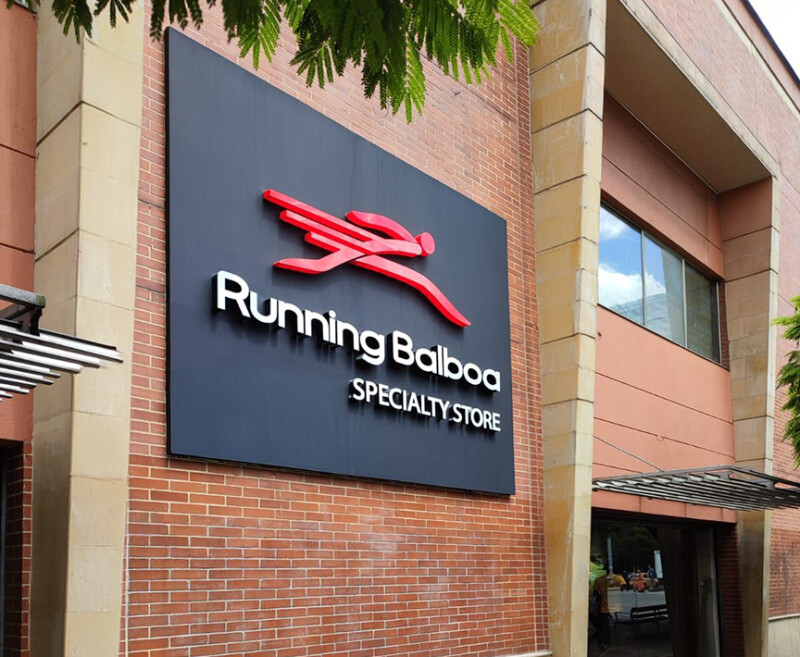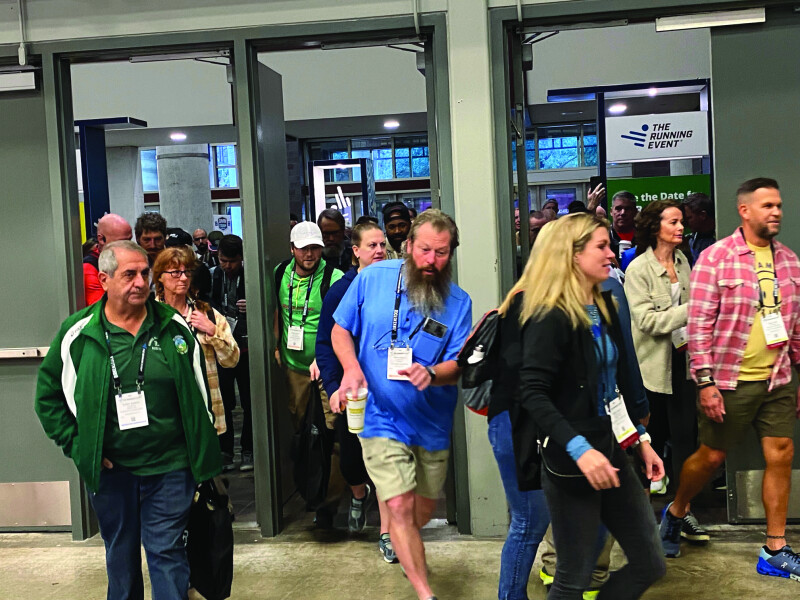As long as Allie Vincent has been on the payroll at Swags Sport Shoes in Louisville, KY – 16 years and counting, she reminds – youth footwear has inhabited a space in the business.
“When families come in, having youth footwear allows us to be their one-stop shop,” says Vincent, Swags’ general manager.
The two-store operation typically carries upwards of 15 models from brands such as New Balance, ASICS, Saucony and Chaco with sizes to accommodate toddlers to pre-teens. Last year, it added Diadora to the mix. And this year, Swags is incorporating youth models from On and Hoka.
“Our philosophy is that if we get kids into good footwear when they’re young, then we’ll become their go-to shoe store,” Vincent says.
While some run shops reject youth footwear altogether and some have entered and exited the category over the years, others have maintained a firm commitment to kids’ footwear and invested in inventory, programming, partnerships and staff training to make youth shoes a steady part of their business.
Why Carry Kids Shoes?
Like Swags, Playmakers in Okemos, MI, has been carrying youth shoes for decades. In fact, when Playmakers acquired a neighboring storefront years ago, it sliced that space in half and devoted the front entirely to kids’ footwear. That space currently features 14 different athletic shoe models, including options from New Balance, Saucony, ASICS and Nike in addition to casual footwear options, including sandals and boots, from brands such as Keen, Birkenstock, Teva and Chaco.
Playmakers leadership views kids’ shoes as a long-term investment in its customers, optimistic that a quality pair of shoes excites young customers and cultivates affinity for Playmakers. Yet more, a strong selection of youth footwear positions Playmakers to earn doctor referrals, a significant contributor to its adult business, says Playmakers co-owner Jake Crowe.
In Bethlehem, PA, youth footwear has been a longtime staple at Aardvark Sports. The 39-year-old running store typically carries six-to-eight footwear models in various colorways.
While Aardvark footwear buyer Jon Notary wouldn’t call youth footwear a financial windfall for the store, he says having kids’ shoes on hand engenders goodwill and spotlights Aardvark’s longstanding commitment to its local community.
“We serve the whole community, from eight to 80, so that means making sure we have something for everyone who comes through our doors,” Notary says.
It’s important to note, however, that spending on youth footwear is on the rise. Consumer tracking firm Circana recently identified youth shoes as the footwear market’s fastest-growing category.
Challenges of Youth Footwear
Investing in youth footwear, of course, isn’t all rainbows and butterflies.
Youth footwear sales are often seasonal. The back-to-school and cross-country seasons in August represent the category’s historical peak. At Playmakers, Crowe notes a steady rise in traffic starting in March and rising throughout the summer as track programs begin and kids have either “grown out or blown out of their shoes” from the previous fall. Other months, however, can be hit or miss.
The seasonality of the category combined with the scattered availability of fill-ins makes thoughtful inventory planning a must.
“You need to build the seasonality into your futures, knowing when demand will surge and having product booked for that time,” Notary says.
Ordering, meanwhile, isn’t as straightforward as it is on the adult side. Crowe found a learning curve when he began overseeing youth footwear buying at Playmakers. Some brands, for instance, attach different SKUs to infant, preschool and grade school models.
“You absolutely need to be detail oriented and double checking your orders to avoid a costly mistake,” Crowe says.
And then there’s the issue of price. While adults have largely endured price increases in their footwear, it is a more finnicky issue on the youth side given the damage many kids inflict on shoes and how quickly some children grow. With many parents, Notary says, cost drives the purchase, which heightens the importance of offering models with accessible price points.
Fueling Youth Shoe Sales
With youth footwear on hand, run shops, of course, want to move it out the door.
While Swags sponsors cross-country and track teams as well as races to build relationships with local schools and clubs, it has also directly courted families and kids with targeted store programming. The Louisville store hosts a running camp for elementary school students each summer, has offered shoe-tying clinics to train youngsters on knotting their laces and concocts family-friendly activities like scavenger hunts that begin and end at Swags’ two Louisville locales.
These initiatives help build awareness for Swags’ offerings and ingratiate Swags with locals, Vincent says.
In Pennsylvania, Aardvark has teamed with organizations such as Girls on the Run and Healthy Kids Running Series and often brings Aandy, the store’s kid-approved blue aardvark mascot, to events. The store also spotlights its youth footwear in digital marketing, particularly around the back-to-school season when interest in the category climbs.
Taking Advantage
Playmakers, meanwhile, is intimately involved with the Michigan Mile. At the end of the school year, students from local Michigan counties participate in a one-mile race at Jackson Field in Lansing, MI. Playmakers hosts the event’s packet pickup in its parking lot and fills the day with inflatables, face painting and, yes, youth footwear sales.
“There’s so much traffic here that we’re able to take advantage of it and sell a lot of shoes that day,” Crowe says, adding that Playmakers will often grab end-of-life youth product at a discount before the Michigan Mile event to offer compelling deals and earn solid margins.
Throughout the year, though, Crowe says treating Playmakers’ youngest customers as valued customers is critical. In particular, Playmakers emphasizes devoting the same time and attention to the fit process with kids as it does adults.
“That rounds out the experience and builds trust with the kids and their parents,” Crowe says. “You don’t want to take any customer for granted.”
________
On and Hoka Enter the Kids Game
Within the last two months, two of run specialty’s leading brands began courting kids (and their parents) as both On and Hoka debuted youth footwear.
In March, On launched the kid-oriented Cloud Play and the Cloud Sky for pre-teens, two new products spurred by company leaders entering parenthood, social media messages and even handwritten notes requesting youth footwear.
“We see the value in reaching out to younger consumers and building brand loyalty,” says Gerald Marolf, On’s global head of product.
While both of On’s youth models feature the distinctive hallowed cavities look of On’s adult footwear, On adapted its youth shoes to the needs of small but growing feet. The CloudTec midsole technology, for example, was designed with biometrics in mind and activates at much lower weights. Both models also feature a fortified toe cap for protection and durability as well as elastic laces, while the Cloud Play incorporates a Velcro closure.
Hoka, meanwhile, launched youth versions of the Speedgoat 5, Clifton 9 and Ora Slide on April 21. Starting with Hoka’s best-selling adult shoes and the brand’s performance and comfort-oriented DNA, Hoka then addressed Generation Alpha’s interest in environmentalism by using sustainable materials like sugarcane EVA and rPET meshes.
“Hoka is always looking ahead and now we are also focused on ways to inspire young athletes to fly on the road and on trails,” says Hy Rosario, product director of outdoor/kids for Hoka. “Our ethos for this collection was to create ‘big performance in small sizes.’”







